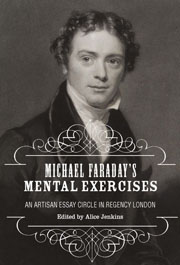Refine search
Actions for selected content:
18 results in Liverpool English Texts and Studies

Criminal Moves
- Modes of Mobility in Crime Fiction
-
- Published by:
- Liverpool University Press
- Published online:
- 09 July 2020
- Print publication:
- 26 November 2019
-
- Book
- Export citation

Rough Beasts
- The Monstrous in Irish Fiction, 1800–2000
-
- Published by:
- Liverpool University Press
- Published online:
- 09 July 2020
- Print publication:
- 13 November 2019
-
- Book
- Export citation

Border Blurs
- Concrete Poetry in England and Scotland
-
- Published by:
- Liverpool University Press
- Published online:
- 08 July 2020
- Print publication:
- 19 November 2019
-
- Book
- Export citation

Didactics and the Modern Robinsonade
- New Paradigms for Young Readers
-
- Published by:
- Liverpool University Press
- Published online:
- 08 July 2020
- Print publication:
- 06 September 2019
-
- Book
- Export citation

Ireland, Migration and Return Migration
- The 'Returned Yank' in the Cultural Imagination, 1952 to present
-
- Published by:
- Liverpool University Press
- Published online:
- 03 July 2020
- Print publication:
- 08 March 2019
-
- Book
- Export citation

The Male Body in Medicine and Literature
-
- Published by:
- Liverpool University Press
- Published online:
- 16 November 2019
- Print publication:
- 01 May 2018
-
- Book
- Export citation

Ten Years on the Parish
- The Autobiography and Letters of George Garrett
-
- Published by:
- Liverpool University Press
- Published online:
- 05 May 2018
- Print publication:
- 01 May 2017
-
- Book
- Export citation

Voyages over Voices
- Critical Essays on Anne Stevenson
-
- Published by:
- Liverpool University Press
- Published online:
- 05 June 2012
- Print publication:
- 15 September 2010
-
- Book
- Export citation

Shades of Authority
- The Poetry of Lowell, Hill and Heaney
-
- Published by:
- Liverpool University Press
- Published online:
- 05 January 2012
- Print publication:
- 01 October 2007
-
- Book
- Export citation

Labyrinths of Deceit
- Culture, Modernity and Identity in the Nineteenth Century
-
- Published by:
- Liverpool University Press
- Published online:
- 05 January 2012
- Print publication:
- 01 January 2008
-
- Book
- Export citation

Catholic Sensationalism and Victorian Literature
-
- Published by:
- Liverpool University Press
- Published online:
- 05 January 2012
- Print publication:
- 01 May 2007
-
- Book
- Export citation

Michael Faraday's Mental Exercises
- An Artisan Essay-Circle in Regency London
-
- Published by:
- Liverpool University Press
- Published online:
- 05 December 2011
- Print publication:
- 01 June 2008
-
- Book
- Export citation

James Thomson
- Essays for the Tercentenary
-
- Published by:
- Liverpool University Press
- Published online:
- 05 November 2011
- Print publication:
- 01 January 2000
-
- Book
- Export citation

The New Poet
- Novelty and Tradition in Spenser's Complaints
-
- Published by:
- Liverpool University Press
- Published online:
- 05 November 2011
- Print publication:
- 01 April 1999
-
- Book
- Export citation

Ciaran Carson
- Space, Place, Writing
-
- Published by:
- Liverpool University Press
- Published online:
- 26 October 2011
- Print publication:
- 15 September 2010
-
- Book
- Export citation

Reading Rochester
-
- Published by:
- Liverpool University Press
- Published online:
- 26 October 2011
- Print publication:
- 01 October 1995
-
- Book
- Export citation

Recognizing the Romantic Novel
- New Histories of British Fiction, 1780-1830
-
- Published by:
- Liverpool University Press
- Published online:
- 26 October 2011
- Print publication:
- 13 August 2010
-
- Book
- Export citation

Sea-Mark
- The Metaphorical Voyage, Spenser to Milton
-
- Published by:
- Liverpool University Press
- Published online:
- 26 October 2011
- Print publication:
- 01 September 1997
-
- Book
- Export citation
